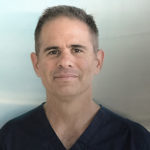
Posted by Laurence Weider on February 15, 2024
For individuals considering labiaplasty, understanding the procedure and the expected outcome is vital to making informed decisions. Labiaplasty is a surgical intervention designed to alter the size, shape, or symmetry of the labia minora or majora. Often performed as an outpatient procedure, labiaplasty aims to enhance comfort, aesthetics, and confidence. This guide provides a detailed overview of the procedure and what patients can anticipate.
Overview of the Labiaplasty Procedure
Labiaplasty is customized to address each patient’s unique anatomy and goals. While the specific techniques may vary, the procedure generally follows these steps:
1. Positioning and Anesthesia
The patient is positioned on the operating table, and anesthesia is administered. Options include local anesthesia with sedation or general anesthesia, determined by the patient’s preference and the surgeon’s recommendation.
2. Preparation
The surgical area is cleansed thoroughly using antiseptic soap. To ensure a sterile environment and prevent infection, intravenous (IV) antibiotics are also administered.
3. Incision
The surgeon makes precise incisions along the labia minora or labia majora based on the patient’s desired outcome. The type and location of incisions are tailored to factors such as tissue redundancy and aesthetic preferences. If requested, a reduction of the clitoral hood may also be included.
4. Tissue Reshaping
Excess tissue is carefully removed, and the remaining tissue is reshaped to achieve the desired contour. Techniques such as trimming, wedge resection, or subcutaneous fat removal may be used to achieve the patient’s goals.
5. Hemostasis
Bleeding is controlled with surgical electrocautery, ensuring a safe and bloodless surgical field.
6. Closure
The incisions are closed using dissolvable sutures to promote healing and minimize scarring. The sutures typically dissolve without needing removal.
7. Pain Relief
Local anesthesia is injected into the surgical site to reduce postoperative pain, and oral pain medication is prescribed for additional relief during recovery.
8. Postoperative Care and Recovery
After surgery, patients are monitored in a recovery area before being discharged home. Detailed postoperative instructions are provided to ensure proper healing and minimize complications. These include:
- Pain Management: Guidelines for medication and managing discomfort.
- Hygiene: Instructions for keeping the surgical area clean.
- Activity Restrictions: Recommendations for rest and limitations on physical activities.
Follow-up appointments are scheduled to monitor healing, address concerns, and ensure the procedure’s success.
Selecting the Right Practitioner for Labiaplasty
The sensitive nature of labiaplasty makes it essential to choose a qualified and experienced practitioner. Board-certified plastic surgeons or gynecologists with expertise in labiaplasty have the necessary skills and knowledge to perform the procedure safely and effectively.
Personalized Treatment Plans
Open communication during the initial consultation is key to creating a personalized treatment plan. Patients can discuss their expectations, goals, and concerns to ensure the procedure aligns with their anatomy and desired outcomes.
Conclusion: Empowerment Through Labiaplasty
Labiaplasty is a transformative procedure that allows individuals to enhance their comfort, confidence, and overall well-being. At my practice in Dallas, Texas, I am dedicated to providing personalized care and guidance throughout every step of the labiaplasty journey.
If you are considering labiaplasty and would like to learn more about the procedure or discuss your specific needs, I encourage you to schedule a consultation with me. Your comfort, satisfaction, and overall health are my top priorities. Take the first step toward empowerment by contacting my Dallas office to begin your labiaplasty journey.
Dr. Weider, a native of Southern California, is a Board-Certified Plastic Surgeon who has maintained a private practice in Dallas, TX since 1999. After attending Stanford University, he obtained his medical degree (M.D.) from Baylor College of Medicine in Houston. He then completed a one year surgical internship in Los Angeles at Harbor-UCLA Medical Center, followed by a four year general surgery residency in Dallas at Methodist Medical Center, and a two year plastic surgery fellowship in Cleveland at Case Western Reserve University.







